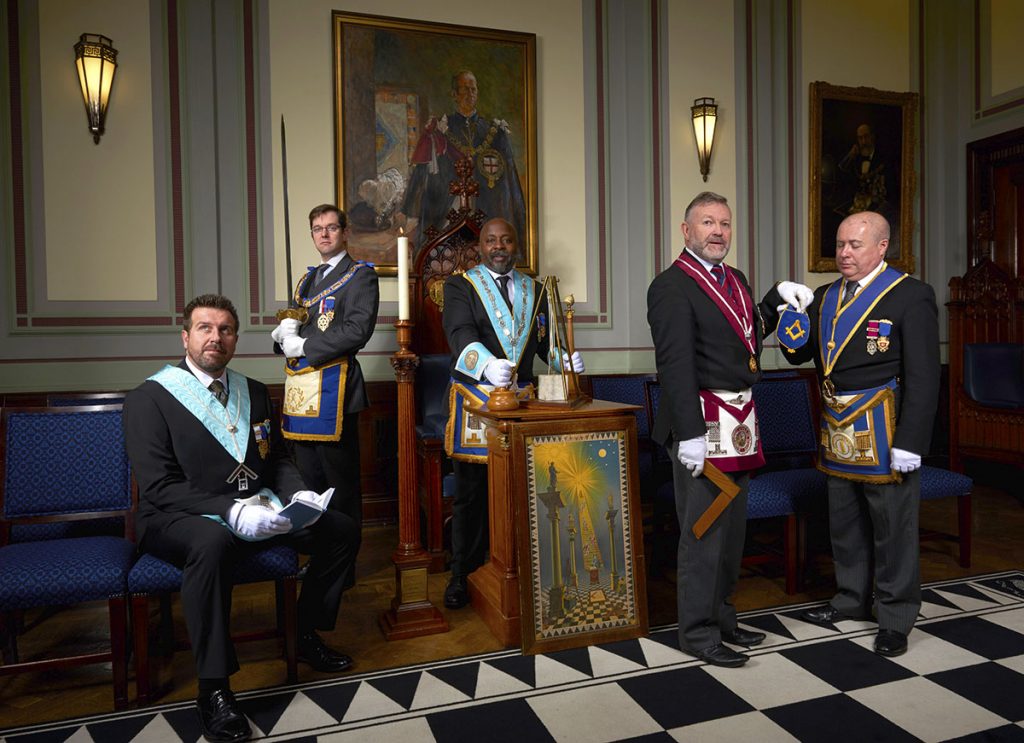Understanding the Hidden Benefit of Joining Freemason for Success
Understanding the Hidden Benefit of Joining Freemason for Success
Blog Article
Exploring the Mysteries of the Freemason: What You Need to Know
The Freemason, a term frequently shrouded in intrigue and dispute, represents a complicated tapestry of historic reality and modern myth. Developed in the late 18th century, this secret culture was initially rooted in the Enlightenment's ideals however has actually because become synonymous with conspiracy theory concepts about elite control. As we navigate the origins, key numbers, and the raw comparison in between myth and reality, one need to consider how these stories influence contemporary understandings of power and secrecy. What could be disclosed with a more detailed assessment of these elements could test long-held assumptions regarding the shadows that linger in our society.
Beginnings of the Freemason
The beginnings of the Freemason are steeped in a mix of historical intrigue and ideological eagerness. Established in 1776 in Ingolstadt, Bavaria, by Adam Weishaupt, the team was initially created as a secret society targeted at advertising Enlightenment perfects such as reason, secularism, and the splitting up of church and state. Weishaupt, a teacher of canon legislation, looked for to test the dominating authority of the church and state, which he checked out as overbearing institutions stifling intellectual and individual flexibility.
The Freemason sought to recruit significant members from various social sectors, consisting of politics, academia, and the arts, to promote a network devoted to these Knowledge concepts. The society operated under a shroud of secrecy, employing coded language and routines to secure its members from mistreatment, specifically given the repressive environment of the time. However, the Freemason faced considerable resistance from both governmental authorities and spiritual organizations, which saw the team as a threat to their power.
Key Figures and Participants
That were the pivotal figures that formed the Freemason's early influence and instructions? The Bavarian Freemason, started in 1776 by Adam Weishaupt, arised as a response to the oppressive societal structures of the time.
An additional substantial number was Johann Gottlieb Fichte, a popular thinker whose concepts on nationalism and education resonated with the Freemason's objectives. Although Fichte was not a formal participant, his philosophical foundations affected the team's ideology. In addition, figures like the author and theorist Johann Wolfgang von Goethe were related to the broader intellectual activities of the time, although their straight involvement with the Freemason continues to be questioned.
These key figures contributed to the Freemason's early instructions, pushing the boundaries of political and social idea, while their cumulative efforts aimed to test well-known norms and promote an environment of progressive adjustment in Europe.
Myths vs. Fact
Several misconceptions surround the Freemason, usually blending truth with fiction in a manner that obscures its true nature. This secret culture, initially established in 1776 in Bavaria, intended to promote Enlightenment suitables and battle spiritual and political oppression. The notion that the Freemason remains to put in substantial influence over world events is a misconception. While the group did exist, it was dissolved in the late 18th century and has not operated as a cohesive entity ever since.
One more prevalent misconception is that the Freemason comprises a network of elite people manipulating global affairs. In fact, many conspiracy theories overemphasize the team's significance, attributing misguided motives to societal trends and occasions. This has actually led to an oversimplified view of complex issues.

Modern Interpretations
Contemporary interpretations of the Freemason commonly mirror more comprehensive societal stress and anxieties and a fascination with secrecy and power. This contemporary lens often connects the Freemason with conspiracy theory theories that recommend a surprise elite coordinates world events, adjusting federal governments and economies for their very own gain. Such stories use a deep-rooted wonder about of authority, specifically in times of crisis look at these guys or social upheaval.

Furthermore, some contemporary analyses mount the Freemason as an allegory for the intricacies of globalization and the interconnectedness of prominent people and organizations. This perspective encourages an important exam of just how power dynamics operate in today's globe, highlighting the equilibrium between transparency and secrecy in governance and company techniques.
Social Impact and Legacy
Influenced by centuries of intrigue, the cultural effect and tradition of the Freemason prolong much beyond its historical beginnings. This secret culture, established in the late 18th century, has penetrated various aspects of popular culture, from literary works and movie to songs and art. The principle of the Freemason has actually developed into a symbol of conspiracy theory concepts, typically representing a perceived hidden power controling international occasions.
In literature, writers like Dan Brown have woven the Freemason into elaborate stories, captivating readers with styles of privacy and power. Films such as "National Prize" and "The Da Vinci Code" additionally bolster the appeal of the culture, blending reality with fiction to create interesting stories.
The Freemason's influence likewise expands into music, with artists referencing the organization to evoke styles of disobedience and social critique. This portrayal has contributed to an attraction with the concept of private groups controlling the bars of power, reflecting social stress and anxieties regarding authority and transparency.
Inevitably, the Freemason's heritage is a complicated tapestry of myth her explanation and truth, shaping understandings of secrecy and control in modern discussion. Its enduring visibility in click to find out more culture emphasizes humanity's seasonal mission for recognizing hidden realities.
Verdict
The expedition of the Freemason exposes an intricate interaction between historic realities and modern myth-making. Started in the Knowledge age, this culture intended to test overbearing structures, yet its legacy has been eclipsed by conspiracy theory concepts that suggest elite control. Recognizing the differences in between the initial ideals and contemporary analyses is important for comprehending the withstanding attraction with the Freemason and its significant impact on social stories surrounding power and secrecy in culture.
Report this page